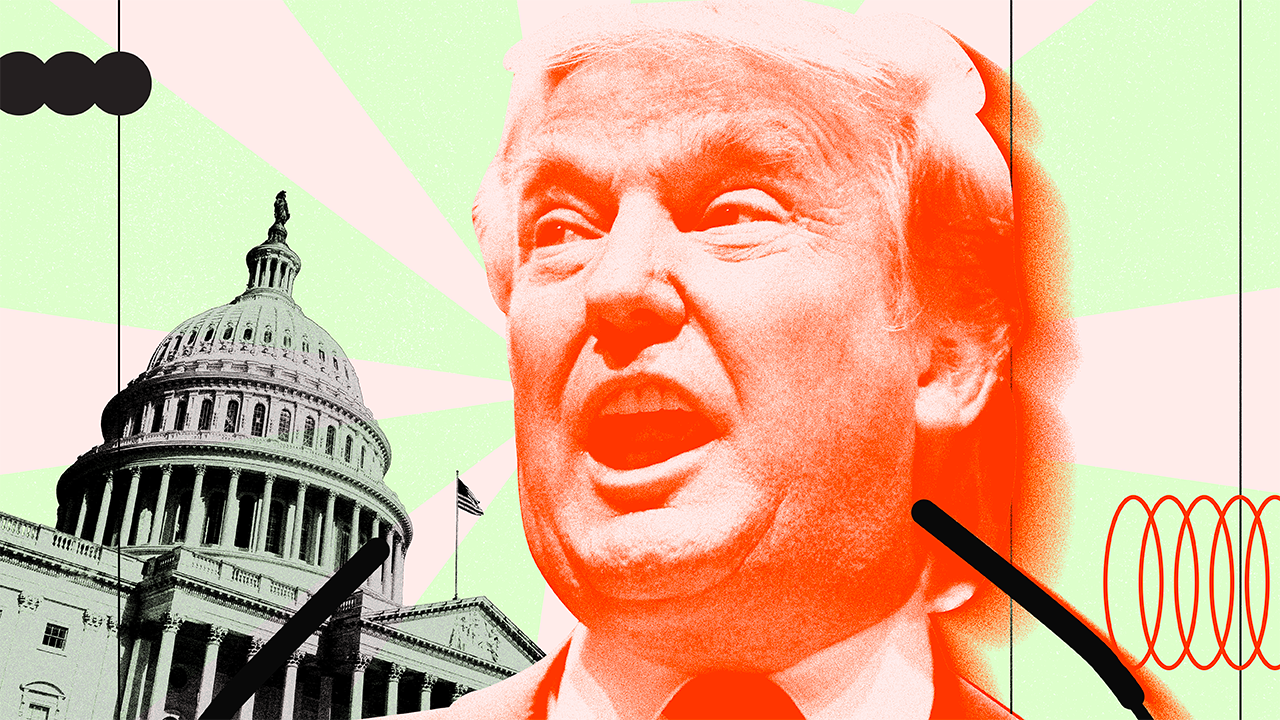Market
How Trump’s Tariffs Impact Crypto and Bitcoin’s Potential

Trump’s tariff policies shook the crypto market last week. Though countries like Mexico and Canada achieved a one-month postponement, tariffs on China have already been enacted.
BeInCrypto spoke with Kristian Haralampiev, Structured Products Lead at Nexo, to understand why Trump’s tariffs caused markets to panic, what the crypto markets should expect 30 days from now, and the areas where the industry could find opportunities.
Trump Tariff Announcements Shake Crypto Market
In the first week of February, US President Trump announced that he would impose a 25% tariff on imports from Canada and Mexico and a 10% tariff on Chinese goods. Additionally, he applied a 10% levy on Canadian energy resources.
These announcements triggered widespread reactions across traditional and crypto markets. Though these tariffs were said to be effective this Tuesday, global financial markets began selling off the prior weekend in preparation.
Though cryptocurrency markets are not inherently tied to trade deficits in the same way equities might be, they still took a significant hit. Following Trump’s tariffs announcements, the total crypto market capitalization contracted by approximately 8% in just one day– falling to about $3.2 trillion.
Bitcoin dropped to a minimum of $91,281, while Ethereum fell as low as $2,143. These fluctuations resulted in billions being wiped from the market. According to Coinglass, total liquidations exceeded $2.23 billion in a 24-hour period. No digital asset went unharmed.
A day before the executive orders were to take effect, Trump agreed to suspend the tariffs against Mexico and Canada for one month. However, China and the US did not reach a negotiation, and the US’s 10% levy on Chinese imports went into effect.
The crypto markets responded favorably to these postponements. XRP, which had dropped by over 25% in response to Trump’s tariff announcements, quickly jumped up 6% after news of the 30-day pause. Meanwhile, Bitcoin surged to $102,599, fueled by renewed investor optimism.
However, several questions remain about what will happen to the crypto market one month from now, when the threat of tariffs is again on the table.
Tariffs’ Impact on Economy Dynamics
Tariffs are taxes on imports or exports that governments use to achieve strategic goals such as trade deals or to reduce trade deficits.
Regarding Trump’s tariffs, the US imports more goods from Canada, Mexico, and China than it exports, meaning it faces a trade deficit with all three countries.
The connection between trade deficits and tariffs is important because of the potential consequences for equities and cryptocurrencies. Tariffs can increase the prices of imported goods, potentially leading to inflation as these costs are passed on to consumers.
In turn, higher costs may decrease consumer demand for those goods, resulting in reduced imports and lower profits for foreign companies, potentially leading them to withdraw from the US market.
Consequently, tariffs could raise foreign goods prices, decrease import volumes, and diminish corporate profits, incentivizing investors to reduce their equity holdings, seek less risky investments, and lower their exposure to cryptocurrency.
The cryptocurrency market’s decline following Trump’s announcements illustrates this phenomenon.
While cryptocurrency and equity markets sometimes exhibit independent behavior, significant events can create broader market disruptions, impacting seemingly unrelated assets due to prevailing market sentiment.
A Possible Opportunity for Crypto
Amidst considerable market volatility, a JPMorgan Chase survey of institutional trading clients found that 51% predict inflation and tariffs will be the dominant forces shaping global markets in 2025. The survey also highlighted market volatility as a major concern, cited by 41% of respondents, a significant increase from 28% in 2024.
However, some industry experts have pointed to a silver lining.
According to Haralampiev, Trump tariff policies, while likely to create volatility in cryptocurrency markets, may also present opportunities for Bitcoin’s long-term rise.
“The introduction of steep tariffs, particularly on Chinese imports, would likely disrupt global tradeflows, increase production costs, and contribute to inflationary pressures. Historically, such economic shifts have driven investors toward alternative assets that serve as hedges against currency devaluation and macroeconomic uncertainty. Cryptocurrencies, particularly Bitcoin, have increasingly been viewed as having this potential, hinting at bullish signals for the asset class,” Haralampiev told BeInCrypto.
In other words, as economic tensions escalate, Bitcoin’s ascent will accelerate.
“All of this could become a tailwind for Bitcoin and leading cryptocurrencies, as their decentralized nature could be viewed as an attractive proposition for investors. If inflation remains high, demand for assets that serve as a hedge —such as Bitcoin— could increase, especially if the US government keeps signaling a willingness to incorporate digital assets into its broader economic strategy,” Haralampiev added.
Even though Bitcoin could hedge against the inflation created by tariffs, these policies would also generate significant supply chain disruptions.
Trump’s 10% levies on China, which are already in effect, create significant uncertainty given the role of Chinese imports in activities like cryptocurrency mining.
Following Trump’s tariff announcements, the share prices of Bitcoin mining companies MARA, Riot Platforms, and Hut 8 declined, with losses exceeding 8% in some cases. These losses made sense, given that Chinese companies dominate the industrial Bitcoin mining equipment market.
American Bitcoin mining companies rely heavily on Chinese-manufactured Integrated Circuits for Specific Applications (ASIC) equipment, which is used to optimize the mining process. Bitmain and MicroBT are among the main suppliers.
“The US mining industry relies heavily on specialized mining hardware from China, meaning higher tariffs could significantly increase equipment costs. This would temporarily squeeze profit margins for miners and potentially slow mining expansion in the short term. Should tariffs drive up costs in the short term, US-based miners could look to further optimize operations, embrace emerging technologies like immersion cooling, or seek partnerships with domestic hardware manufacturers to maintain competitiveness,” Haralampiev explained.
Haralampiev also suggested that this disruption to a key part of the cryptocurrency mining supply chain should be a wake-up call to the industry.
The Need for Domestic Manufacturers
The crypto industry has long recognized the need for increased domestic Bitcoin mining in the United States to lessen dependence on foreign suppliers. This reliance on overseas products has been criticized for hindering decentralization and weakening supply chain resilience.
Some industry players have already taken initiatives to enhance efficiency in the Bitcoin mining field. Last June, Auradine, a Silicon Valley-based Bitcoin miner manufacturer, strategically partnered with virtual power plant providers CPower and Voltus.
Auradine is an American company that develops ASIC units engineered in the United States. These units help miners optimize electricity consumption, offering a competitive advantage. Auradine aims to provide performance and integration through this partnership without relying on third-party components.
Yet, several projects like Auradine are needed to compete with established Chinese suppliers and fulfill the demand for manufacturing equipment required for Bitcoin mining.
“By making foreign mining equipment more expensive, tariffs could encourage investment in domestic mining technology and energy-efficient solutions. The US already has a competitive advantage in renewable energy sources, particularly in states like Texas, which have abundant wind and solar power,” Haralampiev said.
The United States will need to implement a similar strategy for artificial intelligence (AI) development.
US Reliance on Outsourced Semiconductors
The United States and China are in a tight-knit race to dominate AI technologies. Semiconductors play an important in this race. These small but crucial components play a significant role in determining global technological leadership.
Semiconductors are fundamental to modern technology, forming the basis of virtually all electronic devices. They enable the development of increasingly powerful and energy-efficient systems that drive innovation across industries.
These components are critical for expeditiously and accurately processing massive datasets, particularly in AI and data analytics. They power applications from predictive analytics to natural language processing, enabling data-driven insights and decision-making.
According to data from the Observatory of Economic Complexity, in 2022, the United States ranked as the world’s third-largest importer of semiconductor devices, with imports totaling $16.6 billion. The leading suppliers of these imports were Vietnam ($4.57 billion), Malaysia ($2.13 billion), Thailand ($1.66 billion), South Korea ($1.54 billion), and China ($962 million).

US semiconductor imports increased by 13% in value during early 2023 despite ongoing efforts to boost domestic production, according to Trade Finance Global. This increase demonstrates the nation’s continued dependence on foreign chip suppliers.
With Trump enacting tariffs on China, investors are also worried about their impact on semiconductor imports.
A Call for US-based Innovation
Similar to his argument regarding Bitcoin mining, Haralampiev contends that the United States must significantly increase efforts to onshore semiconductor manufacturing.
“By strategically investing in local semiconductor manufacturing and mining hardware production, the U.S. could reduce its reliance on Chinese imports and make its crypto-mining industry more self-sufficient,” he said.
By doing so, tariffs would have less of an impact.
“The US is also looking at advancements in AI, which means its semiconductor industry will eventually catch up in terms of cost-production, where it could currently lack, solidifying the country’s dominance in both mining infrastructure and chip production,” Haralampiev added.
Though Trump has not made any announcements about semiconductor production, he has announced other AI-related initiatives.
Last month, Trump announced Stargate, a $500 billion joint venture between Oracle, SoftBank, and OpenAI, to build massive data centers and infrastructure that support AI development.
However, it is presently unclear how much the federal government will contribute to this massive sum and how much will come from Stargate’s constituent companies.
Weathering the Storm
While Trump’s tariff policies have generated concern, Haralampiev views them as part of a recurring pattern of similar past events in US history.
“This transition aligns with a broader historical cycle of globalization vs. isolationism, where economies shift between prioritizing global integration and domestic self-reliance,” he told BeInCrypto.
He also noted that crypto-related industries have weathered comparable challenges and ultimately prevailed.
“Bitcoin mining has historically proven to be highly adaptable in the face of policy shifts, such as China’s mining ban in 2021, which saw a rapid relocation of mining infrastructure to North America and Central Asia,” Haralampiev added.
Future economic scenarios are uncertain, but their potential impact on cryptocurrency markets is clear. Whether that impact is positive or negative will depend on how these scenarios develop.
Disclaimer
Following the Trust Project guidelines, this feature article presents opinions and perspectives from industry experts or individuals. BeInCrypto is dedicated to transparent reporting, but the views expressed in this article do not necessarily reflect those of BeInCrypto or its staff. Readers should verify information independently and consult with a professional before making decisions based on this content. Please note that our Terms and Conditions, Privacy Policy, and Disclaimers have been updated.
Market
Circle Introduces On-Chain Refund Protocol to Strengthen USDC Payments

Circle, the issuer behind the USDC stablecoin, has officially introduced the Refund Protocol—an advanced smart contract framework developed by Circle Research.
This innovation marks a turning point for decentralized stablecoin payments by directly embedding on-chain dispute resolution mechanisms into the blockchain, ensuring digital commerce transparency, security, and trust.
Role of Refund Protocol in the Circle Ecosystem
Traditional stablecoin payment models often lack on-chain refund or dispute resolution mechanisms. Typically, the sender’s stablecoins are held in escrow for a period before being released to the recipient.
An external party, known as an arbiter, oversees this escrow account. However, resolution usually happens off-chain when disputes arise, leading to two major concerns: centralized control by the arbiter and lack of transparency in the dispute process.

To solve this, Circle has designed the Refund Protocol to enhance the overall stablecoin payment experience, especially for USDC. The protocol acts as a smart contract, enabling non-custodial escrow and on-chain dispute resolution.
“Today, Circle’s R&D team released a new Refund Protocol for stablecoin payments. This builds on our earlier open source releases for confidential payments as well as reversible payments. Progress in mainstreaming stablecoin payments,” said Circle CEO Jeremy Allaire.
Rather than controlling the escrow account, the Refund Protocol can only do two things: release funds to the recipient or refund them to the customer. This removes reliance on third-party intermediaries, increases transparency, and boosts efficiency and user trust.
Refund Protocol to Help USDC Gain Market Share?
According to data from DefiLlama, USDT from Tether currently dominates the stablecoin market with over 61% market share. Although USDC holds the second position, its market capitalization is still less than half that of USDT.

The launch of Refund Protocol provides Circle with a strategic edge. By offering developers and businesses an easy way to integrate USDC payments into e-commerce platforms, NFT marketplaces, and DeFi applications, the protocol strengthens USDC’s position as a flexible and reliable medium of exchange.
Additionally, Refund Protocol gives Circle an advantage by providing a decentralized, low-cost, and transparent solution. This will help USDC stand out in real-world applications.
Refund Protocol may face regulatory hurdles despite its innovation, especially in jurisdictions with strict blockchain laws. The legal recognition of on-chain dispute resolution remains uncertain in many regions, potentially posing one of the biggest obstacles to widespread adoption.
Disclaimer
In adherence to the Trust Project guidelines, BeInCrypto is committed to unbiased, transparent reporting. This news article aims to provide accurate, timely information. However, readers are advised to verify facts independently and consult with a professional before making any decisions based on this content. Please note that our Terms and Conditions, Privacy Policy, and Disclaimers have been updated.
Market
Dogecoin (DOGE) Under Pressure—Bearish Setup Could Trigger Sell-Off

Aayush Jindal, a luminary in the world of financial markets, whose expertise spans over 15 illustrious years in the realms of Forex and cryptocurrency trading. Renowned for his unparalleled proficiency in providing technical analysis, Aayush is a trusted advisor and senior market expert to investors worldwide, guiding them through the intricate landscapes of modern finance with his keen insights and astute chart analysis.
From a young age, Aayush exhibited a natural aptitude for deciphering complex systems and unraveling patterns. Fueled by an insatiable curiosity for understanding market dynamics, he embarked on a journey that would lead him to become one of the foremost authorities in the fields of Forex and crypto trading. With a meticulous eye for detail and an unwavering commitment to excellence, Aayush honed his craft over the years, mastering the art of technical analysis and chart interpretation.
As a software engineer, Aayush harnesses the power of technology to optimize trading strategies and develop innovative solutions for navigating the volatile waters of financial markets. His background in software engineering has equipped him with a unique skill set, enabling him to leverage cutting-edge tools and algorithms to gain a competitive edge in an ever-evolving landscape.
In addition to his roles in finance and technology, Aayush serves as the director of a prestigious IT company, where he spearheads initiatives aimed at driving digital innovation and transformation. Under his visionary leadership, the company has flourished, cementing its position as a leader in the tech industry and paving the way for groundbreaking advancements in software development and IT solutions.
Despite his demanding professional commitments, Aayush is a firm believer in the importance of work-life balance. An avid traveler and adventurer, he finds solace in exploring new destinations, immersing himself in different cultures, and forging lasting memories along the way. Whether he’s trekking through the Himalayas, diving in the azure waters of the Maldives, or experiencing the vibrant energy of bustling metropolises, Aayush embraces every opportunity to broaden his horizons and create unforgettable experiences.
Aayush’s journey to success is marked by a relentless pursuit of excellence and a steadfast commitment to continuous learning and growth. His academic achievements are a testament to his dedication and passion for excellence, having completed his software engineering with honors and excelling in every department.
At his core, Aayush is driven by a profound passion for analyzing markets and uncovering profitable opportunities amidst volatility. Whether he’s poring over price charts, identifying key support and resistance levels, or providing insightful analysis to his clients and followers, Aayush’s unwavering dedication to his craft sets him apart as a true industry leader and a beacon of inspiration to aspiring traders around the globe.
In a world where uncertainty reigns supreme, Aayush Jindal stands as a guiding light, illuminating the path to financial success with his unparalleled expertise, unwavering integrity, and boundless enthusiasm for the markets.
Market
Is XRP’s Low Price Part of Ripple’s Long-Term Growth Strategy?

Ripple’s recently acquired Hidden Road has secured a broker-dealer license from the Financial Industry Regulatory Authority (FINRA). This marks a significant milestone in expanding its prime brokerage services for institutional investors.
Market watchers see it as a deliberate strategy by Ripple to build infrastructure and position itself for future growth. That being said, traders are expecting that XRP’s value will rise later.
Ripple Expands Institutional Presence with Hidden Road’s FINRA License
According to the latest press release, Hidden Road Partners CIV US LLC was granted approval. The license now enables the firm to provide a broader suite of regulatory-compliant services, including clearing, financing, and prime brokerage for fixed-income assets to institutions.
Noel Kimmel, President of Hidden Road, highlighted that the license was a pivotal development for the company. According to him, it enhances Hidden Road’s ability to operate in traditional financial (TradFi) markets.
“As a FINRA member, we will be able to bring our best-in-class, technology-driven fixed income service offering to an expanded universe of institutional clients. Our business has tremendous momentum, and we look forward to continuing to provide superior execution and support to our clients amidst today’s exceptionally dynamic market environment,” Kimmel said.
The FINRA approval follows Ripple’s $1.25 billion acquisition of Hidden Road. Announced on April 8, 2025, this was one of the largest deals in the digital assets sector.
The move positions Ripple as the first cryptocurrency company to own a global, multi-asset prime broker. Experts believe the acquisition and subsequent license are part of a broader strategy Ripple is employing.
“Hidden Road just secured a broker-dealer license right after Ripple’s acquisition. This isn’t a coincidence, it’s a statement. XRP is not playing checkers. It’s playing regulatory chess,” an analyst wrote on X (formerly Twitter).
Is Ripple Behind XRP’s Low Price? Analyst Thinks So
In fact, analysts also claim that XRP’s neutral reaction to recent milestones isn’t a sign of weakness but rather a strategic move. In a recent analysis, crypto analyst Levi argued that the current price of XRP, hovering around $2, is not coincidental, but rather a result of Ripple’s deliberate approach.
He suggested that the low price is designed to allow Ripple to operate under the radar while making key strategic moves, such as the Hidden Road acquisition.
“Hidden Road isn’t a flex. It’s infrastructure. It’s the final puzzle piece — giving Ripple a fully integrated, lightning-fast, global value settlement system,” he stated.
The analyst emphasized that while the public focused on Ripple’s legal battles with the SEC, the company quietly built its global value settlement system behind the scenes.
“XRP at $2 isn’t undervalued — it’s deliberately suppressed. When the switch flips, the revaluation won’t be gradual — it’ll be instant,” Levi noted.
In his view, those who have invested early will be positioned to benefit as the market shifts. Meanwhile, XRP, after hitting an all-time high earlier this year, has continued to decline.

At press time, the altcoin was trading at $2.0. According to BeInCrypto data, this represented a decline of 1.0% over the past day.
Disclaimer
In adherence to the Trust Project guidelines, BeInCrypto is committed to unbiased, transparent reporting. This news article aims to provide accurate, timely information. However, readers are advised to verify facts independently and consult with a professional before making any decisions based on this content. Please note that our Terms and Conditions, Privacy Policy, and Disclaimers have been updated.
-

 Altcoin23 hours ago
Altcoin23 hours agoHow Rising Solana Network Inflows Could Drive SOL Price to $150?
-

 Altcoin15 hours ago
Altcoin15 hours agoCZ Honors Nearly $1 Billion Token Burn Promise
-

 Bitcoin23 hours ago
Bitcoin23 hours agoGary Gensler Explains Why Bitcoin Will Outlast Altcoins
-

 Market22 hours ago
Market22 hours agoBitcoin Whales Withdraw $280 Million: Bullish Signal?
-

 Altcoin22 hours ago
Altcoin22 hours agoHow Crypto Traders Made $666K from $4.5K in One Trade?
-

 Market21 hours ago
Market21 hours agoBitcoin Price Range-Bound—But a Move Higher May Be Brewing?
-

 Market20 hours ago
Market20 hours agoExpanding Blockspace and Enhancing Privacy
-

 Market19 hours ago
Market19 hours agoWhy XRP Could Beat Dogecoin, Solana In ETF Race And Trigger A Price Surge





















